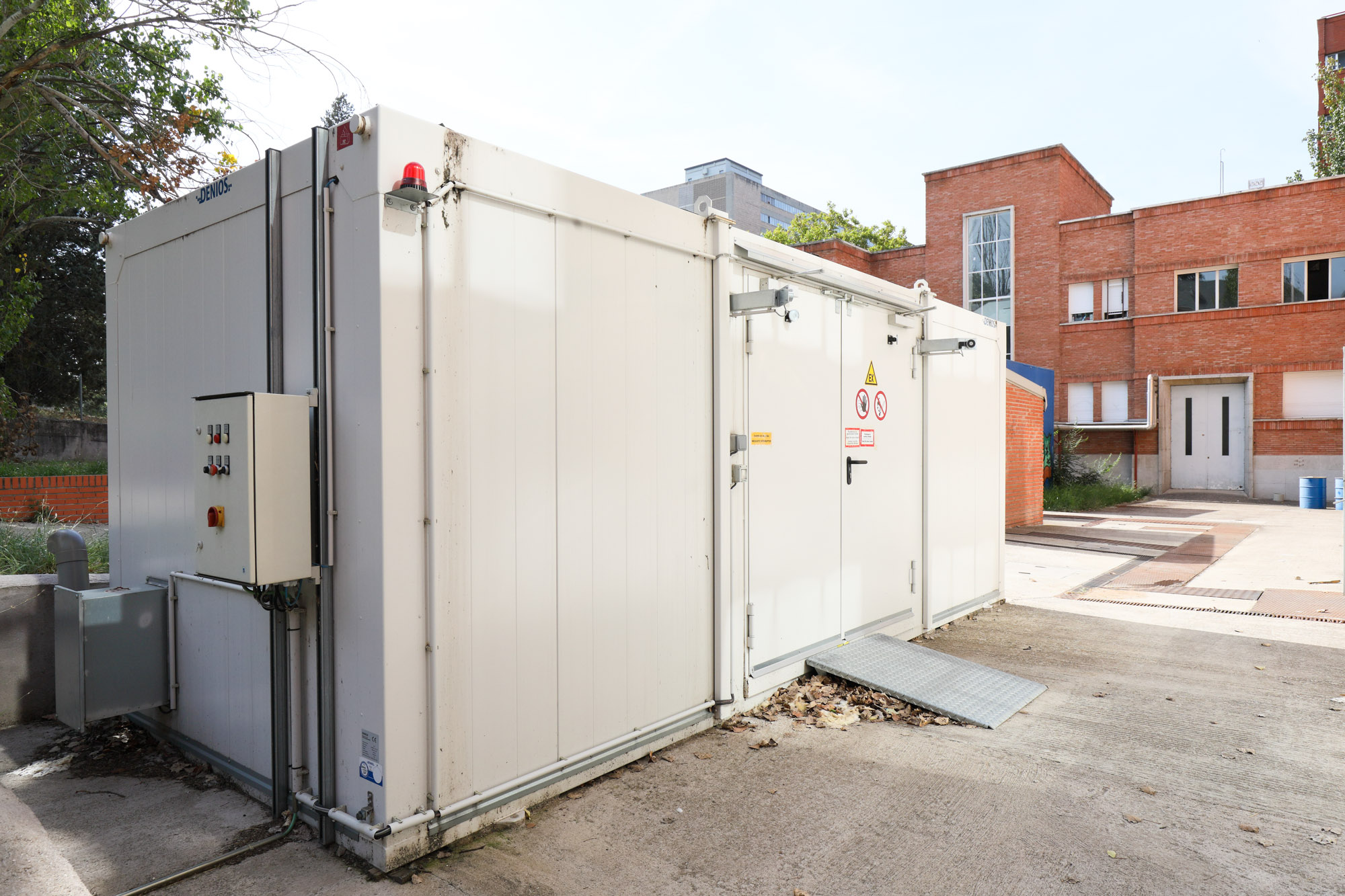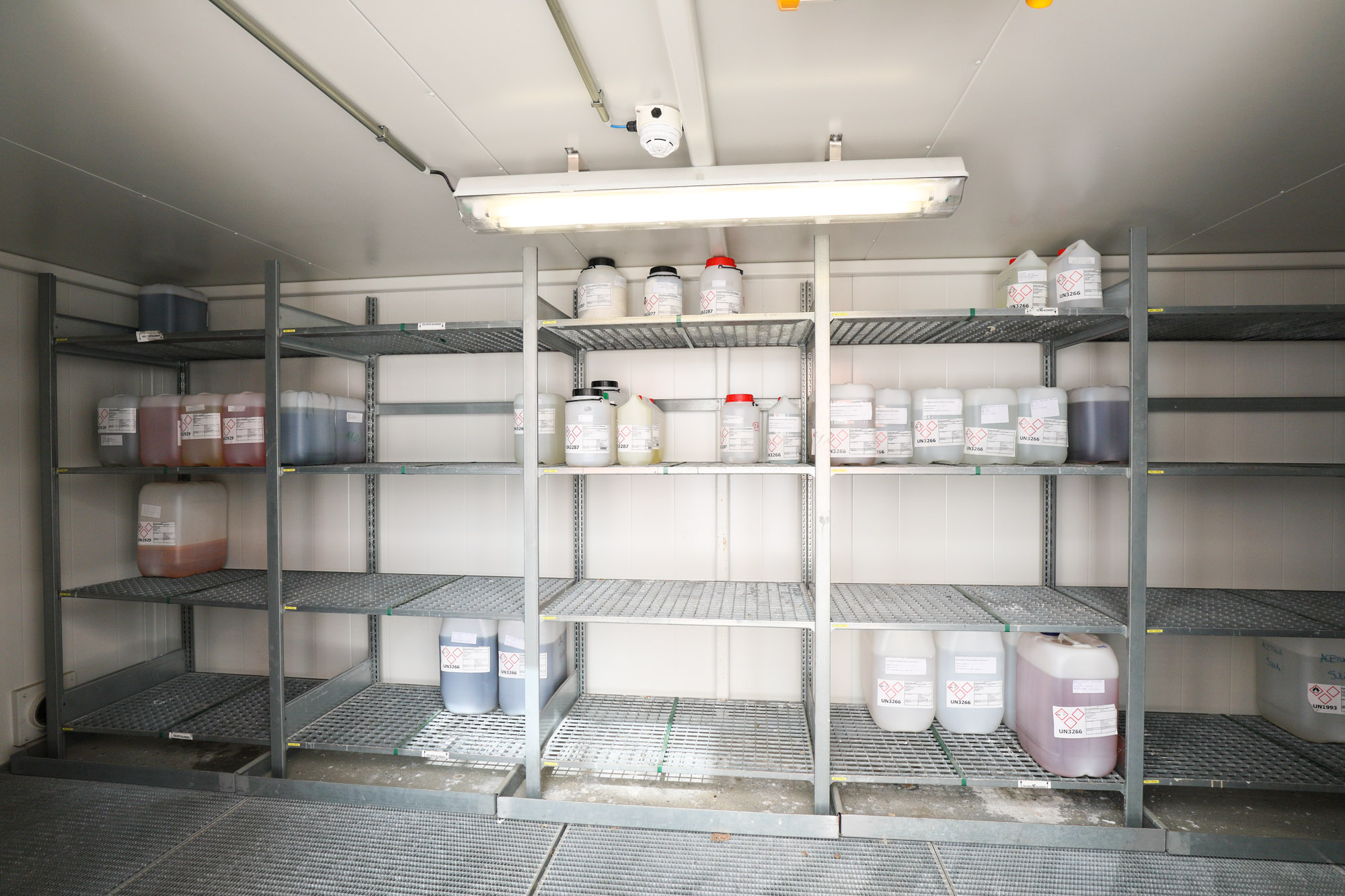Hazardous Waste Management
Within the Complutense University, the Faculty of Chemical Sciences is one of the main centers generating hazardous chemical waste derived from its teaching and research activity as well as from the provision of services.
In 2016, due to a change in waste legislation, our faculty was registered ex officio by the Community of Madrid in the Register of Waste Producers as a Producing Center.
For all these reasons, the Faculty has been making efforts for years to improve the management of the waste it generates.
The result of these efforts has been:
- The installation of the Temporary Waste Storage Facility (ATR)
- The approval by the Faculty Board of the "Internal procedure for the management of hazardous laboratory waste"
- The creation of a position for a Waste Management Technician
TRANSFER AND STORAGE OF HAZARDOUS WASTE
The Waste Management Technician is in charge of the transfer of hazardous waste from the generating centers (teaching laboratories, research laboratories and research support centers) and its correct storage in the ATR until its final removal by a specialized company. (Companies and Removal Schedule)
All wastes are stored in regulatory and approved containers.
Waste is transported by the shortest route between the laboratory and the ATR, avoiding passing through crowded areas in order to minimize the risk of accidents along the way.
A written record is kept of the entry of waste into the ATR indicating its origin, nature and quantity.
In addition, the ATR components are periodically checked to ensure optimal maintenance and proper operation.



